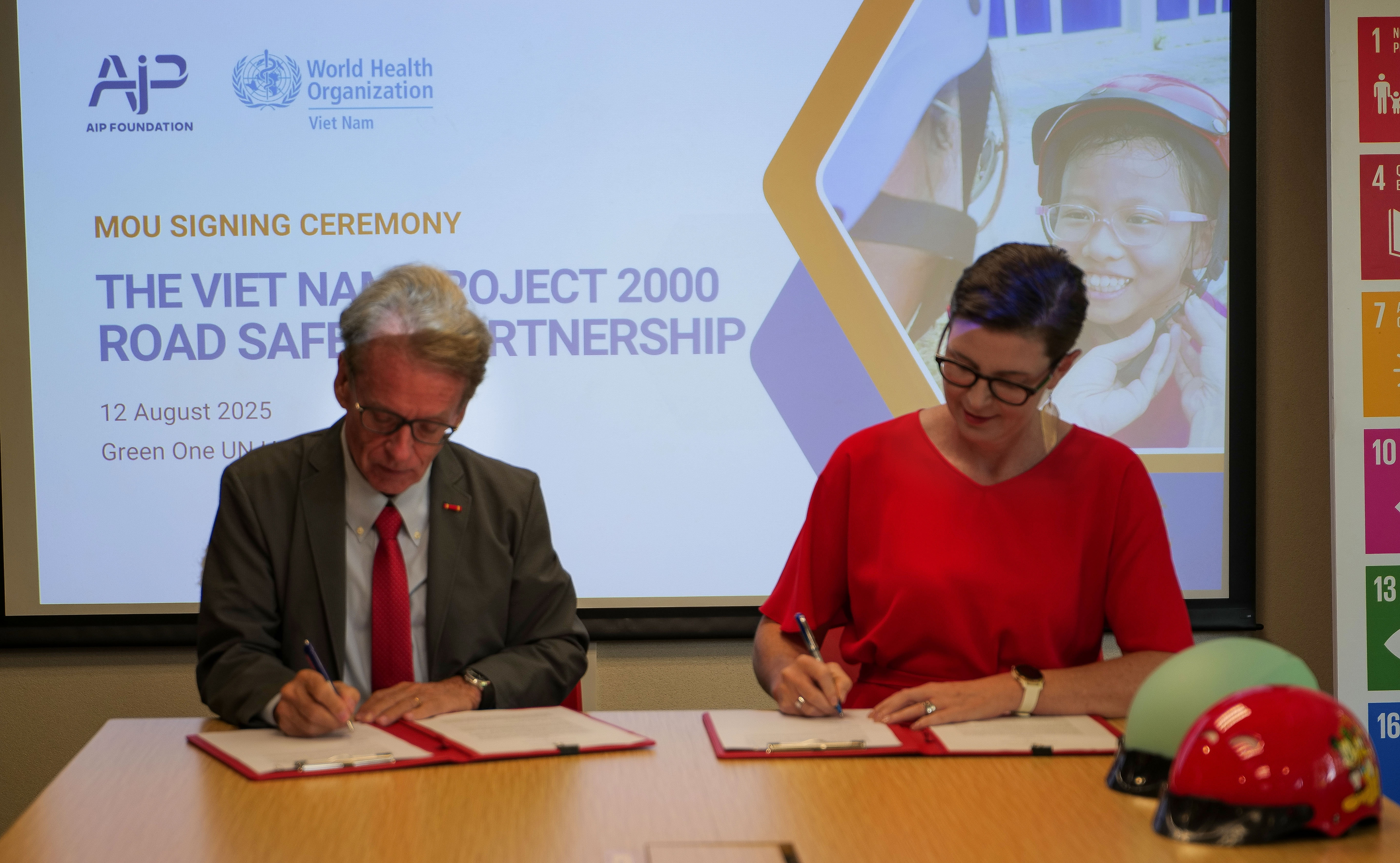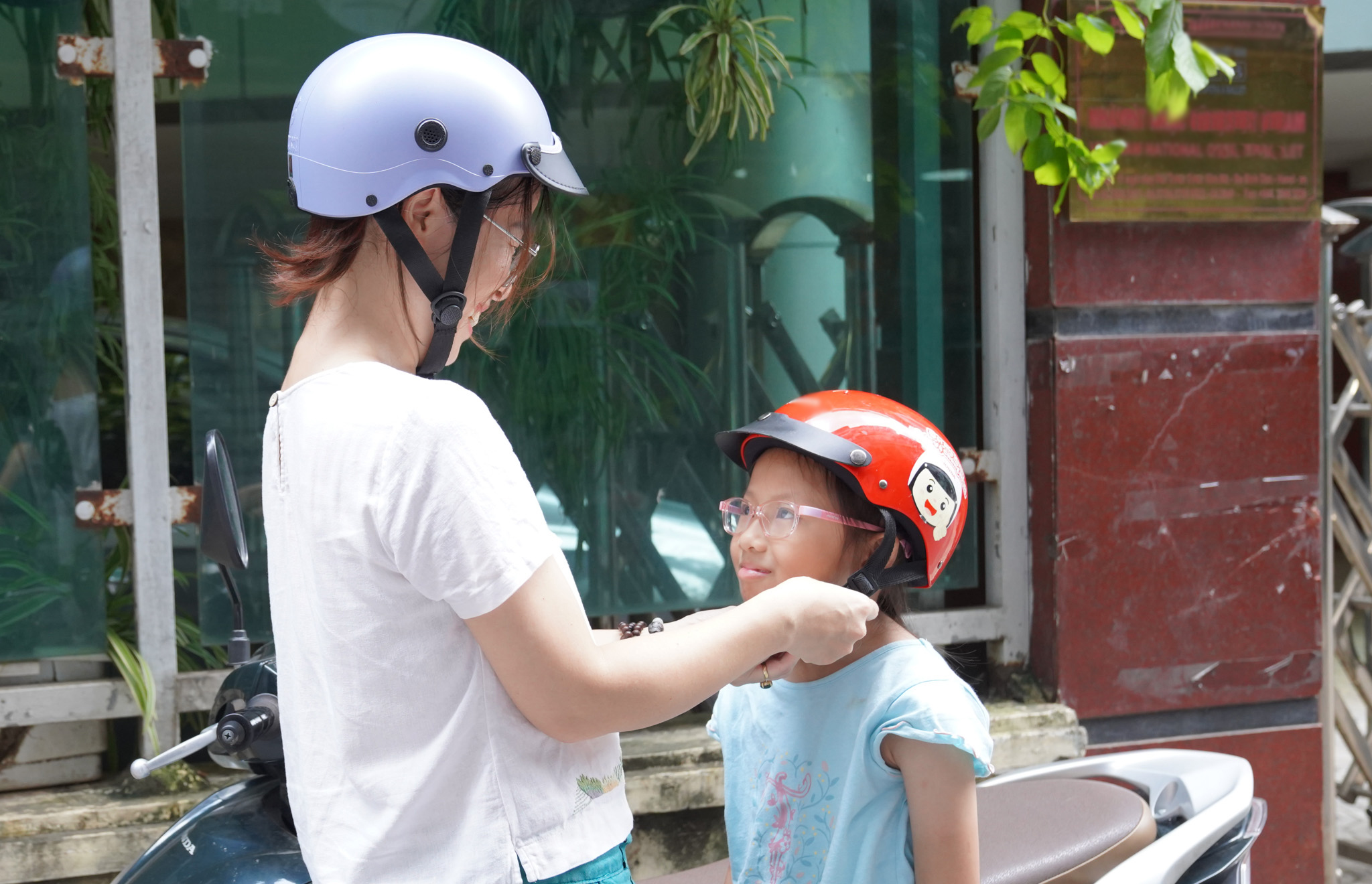WHO and AIP Foundation launch Viet Nam Project 2000, a national partnership to end preventable child road deaths with a mission to save 2,000 young lives every year.
Every day, 5 children in Viet Nam lose their lives due to road traffic crashes—amounting to approximately 2000 preventable deaths each year. These losses represent not only profound tragedies for families but also a significant burden on the country’s health system, economy and society. These tragedies are not inevitable; they are preventable.

Dr Angela Pratt, WHO Representative in Viet Nam, and Mr Greig Craft, President and Founder of AIP Foundation signing the MoU at the Green One UN House – Photo: WHO Viet Nam
Recognizing the urgent need for action, the World Health Organization (WHO) is partnering with AIP Foundation to formally sign a Memorandum of Understanding (MoU) to launch the Viet Nam Project 2000 Road Safety Partnership. Viet Nam Project 2000 aims to improve road safety through coordinated action, evidence-based solutions, and the collective will of government agencies, NGOs, international partners, the private sector and community leaders.
Dr Angela Pratt, WHO Representative in Viet Nam, and Mr Greig Craft, President and Founder of AIP Foundation, gathered at Green One United Nations House in Ha Noi to sign the MoU between the 2 organizations. Overall, this partnership aims to make measurable progress towards reducing the number of children and young people killed on Viet Nam’s roads from 2000 each year to zero.
“No child should lose their life on the way to school. In other words, every child – and every person – should be safe while going about their daily lives on the roads. As a mother of two young daughters, it breaks my heart to know that 5 families in Viet Nam lose a child or young person in a road crash, every day. So, Viet Nam Project 2000 is about more than statistics; it’s about saving futures, supporting families and creating safe, thriving communities,” said Dr Pratt.

Photo: WHO Viet Nam
Moving forward, WHO and AIP Foundation, as partnership conveners, will invite proposed partners from the Government of Viet Nam, international organizations and civil society to join the partnership. The official partnership launch is expected later this year.
A steering committee, governed by WHO Viet Nam and AIP Foundation, will provide overall strategic direction for the partnership, while thematic working groups will lead action on priority areas such as helmet use, child restraints and safe school zones. The specific challenges that the partnership will focus on include:
● motorcycle safety: ensuring all children are wearing certified/quality safety helmets,
● child restraint systems, or child seats, in cars: support new laws based on adopted technical standards to ensure all children in vehicles are safely and properly secured in appropriate child seats, and
● safe school zones: working towards ensuring safe driving, with supportive/safe infrastructure, around schools, especially at ‘drop off’ and ‘pick up’ times.
The Partnership aims to bring together the Government, civil society, private sector and international organizations for stronger partnerships, synergies and coordination aimed at reducing road traffic deaths, particularly among children and young people. The project seeks to build on progress already made in Viet Nam and to catalyze further progress towards the targets of the Global Plan for the Decade of Action 2021–2030, in the spirit of multi-sectoral partnership highlighted at the Fourth Global Ministerial Conference on Road Safety, which took place in Marrakech, Morocco, in February.
“AIP Foundation is proud to collaborate with WHO Viet Nam to sign today's MoU for the Viet Nam Project 2000 Partnership. We are a united movement committed to protecting our children, safeguarding our communities and building a safer future for all, where no needless lives on the roads are lost,” shared Mr Craft.
Child road safety is not just a national challenge, but a global imperative for all countries and Viet Nam Project 2000 aims to contribute to the Sustainable Development Goals. By taking bold steps, Viet Nam is setting an example for the region and the world: that with leadership, collaboration, and commitment, we can protect our children, and create safer roads and communities.
